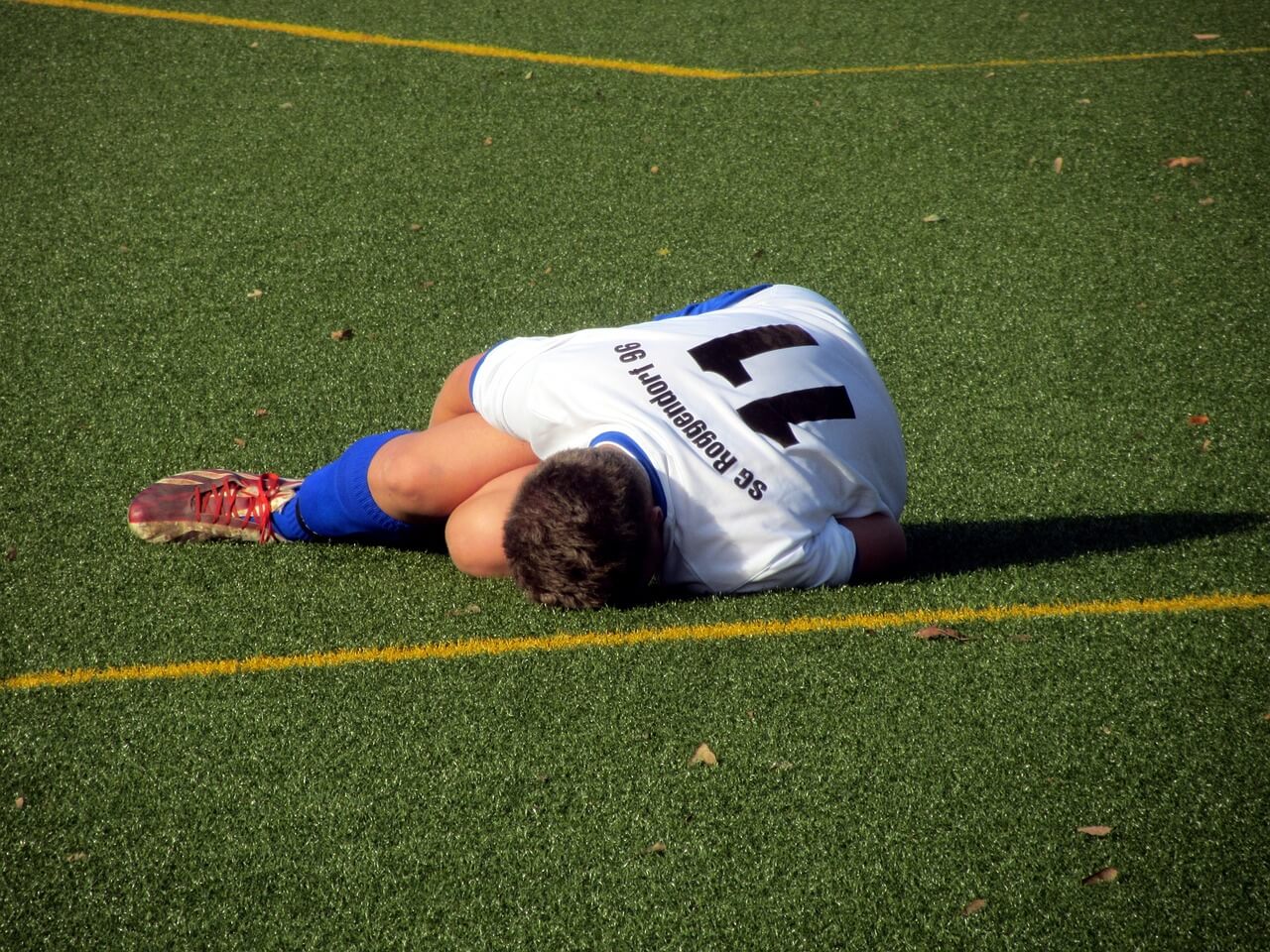Burnout in youth sports isn’t something that parents anticipate. But a strong passion and ambition can lead to burnout in kids when left unchecked.
Ambition is a great characteristic in children, and it’s common among high achievers. However, like most things in life, ambition in athletics needs to be balanced with family, friends and other interests.

Read on to learn how you can spot the signs of burnout and help prevent burnout in youth sports.
Athlete burnout definition
Athletic burnout is a prolonged state of intense mental and physical fatigue brought on by chronic stress.
Burnout in youth sports can be manifested in many different ways. Some athletes may feel more physical effects while others may find themselves mentally drained with little visible affect on their athletic performance.
Personality Traits That Can Lead to Burnout
In their book, Best Practice for Youth Sport (as referenced by Alpine Ontario), Robin Vealey and Melissa Chase outline specific personality traits that put athletes at risk of developing athlete burnout.
According to Vealey and Chase, these traits include: weak coping skills, negative perfectionism, trait anxiety, obsessive passion, and unidimensional identity. Understanding these personality traits can help parents, coaches and clubs identify potential issues before they start.
A Note on Unidimensional identity: As we’ve previously discussed, the act of playing multiple sports can provide a simple way for athletes to develop a multidimensional view of themselves. See our blog about playing multiple sports to learn more.
What Are the Risk Factors for Burnout in Youth Sports?
Burnout in youth sports can be brought on by a myriad of environmental or habitual factors. But there are some factors that present greater risks than others. These include but are not limited to:
- Playing only one sport for more than 8 months of the year
- Large increases in the amount of time spent training
- Unreasonably high expectations of success
- High anxiety
- Low self-esteem
- Pressure from parents, coaches and peers

Not every child that experiences one or more of these pressures will experience burnout. However, knowing these risk factors can help parents, coaches and peers support the athletes they care about.
Spotting Burnout in Kids
The first signs of burnout may appear as a lack of energy during athletic performance. The athlete’s performance may seem mediocre or even clumsy. From the athlete’s perspective, Dr. Keith Kaufman, a sports psychologist, tells the Washington Post that, “you may see staleness, you might see overtraining, but you feel like you can’t stop. That’s where you see burnout really taking hold.” Kaufman suggests that burnout can come with a momentum that’s hard to stop. This momentum may be driven by all of the work the athlete has already put in and their external pressures.
On the subject of external pressures Kaufman told the Washington Post, that medals and scholarships can become the focus of sport. When this happens, “[sport] becomes an obligatory task and chore, and that changes everything.” So how do parents, coaches, clubs, and athletes avoid turning something that was once fun into a chore?
Preventing Burnout in Youth Sports
Preventing burnout in youth sports is about resisting the temptation to overtrain. That’s not a simple feat in today’s social media saturated world where youth can easily spend an hour consuming photos and videos of other athletes around the world showing off their skills. But the payoff of avoiding overtraining is long-term.
Those kids who do not overtrain are much less likely to develop overuse injuries. This means they can enjoy their favourite sport for longer. For those athletes who are at the very pinnacle of their sport, it also means they have a better shot at turning pro.
Dr. Mininder S. Kocher, pediatric orthopedic surgeon at Children’s Hospital Boston, told the New York Times that, “children who grow up in the northern United States are more likely to become major league baseball players than kids from the South because they can’t play their sport year-round and are less likely to be injured.” You read that correctly. If the option to overtrain is removed the chances of excellence become greater.

But aside from those very few athletes at the top of their sport, by preventing overtraining athletes can increase the likelihood that they’ll play their favourite sport into their adult years.
According to the same New York Times article, “Children who specialize in one sport early in life were found to be the first to quit their sport and ended up having higher inactivity rates as an adult.” In turn, when youth pace themselves in sport they increase their potential for lifelong enjoyment and lifelong benefits of physical activity.
Simple Strategies to Prevent Burnout in Youth Sports:
- Play multiple sports, alternating from one sport to another as traditional sports seasons change
- Schedule rest days
- Schedule periods of play (fun skills) to relieve pressure and ensure athletes are having fun
- Take full breaks from sports to enjoy unstructured play
- Continually fuel the body with healthy meals
How much rest does an athlete need to prevent burnout? Of course, that depends on each child’s unique needs. Data shared from Dr. Kocher would suggest that if baseball players in the northern United States excel in baseball because they cannot play in winter then perhaps athletes will thrive with approximately 4 or 5 months off from their sport.
As a second point of reference, the Ann & Robert H. Lurie Children’s Hospital of Chicago recommends a rule of thumb that athletes should at least allow a couple weeks rest from training and competition every three months in order to prevent burnout in youth sports.
What Happens when Athletes Spend Time Away from Sport?
The aim of spending time away from sport is to allow children to stay well rounded. As the National Athletic Trainers’ Association says, “being away from the demands of their sport, even for a short period several times a year, provides an athlete with an opportunity to attend to their schoolwork and relationships that are necessary to leading a more rounded life that leads to enhanced motivation once they return to sport.” When kids have time away they are able to round-out their identities. This development or maintenance of important aspects of their identities such as school, relationships, hobbies and interests, allows children to cope with the ups and downs of their sport and rebound with motivation.
Spotting Athlete Burnout Symptoms
Athlete burnout symptoms can be both physical and mental, which means that spotting burnout can be difficult. Below is a short bulleted list of some of the physical and mental health symptoms of athletes experiencing burnout.
Physical Symptoms include but are not limited to:
- A sudden drop in athletic performance
- Illness due to a suppressed immune system
- Reduced strength and power
- Physical fatigue
- Prolonged, drawn out recovery from an injury

Mental Health Symptoms include but are not limited to:
- Feeling trapped by sporting commitments made to teammates, coaches and even parents.
- Feeling disinterested in sport, and voicing that disinterest
- Emotionally overwhelmed and irritable
- Feeling anxiety about high expectations
- Experiencing depression after failing to meet those competitive expectations
- Low self-esteem and recurring negative self-talk
- Mental fatigue or fog
Athlete Burnout Recovery
If an athlete is experiencing burnout there is no magic pill to make it go away. Instead, the only treatment for burnout is rest. With proper rest, the athlete can reconnect with other friends, family and peers.
Time away from sport provides athletes with the ability to invest time in everything they’ve been missing out on.
As a result, this time away from sport gives them the opportunity to remember why they enjoy it and develop their own intrinsic motivation to play again.
Summary: It’s All About Rest
When children have the proper rest it allows their mind and bodies to recover from playing sport. Whether several months long, or a couple weeks, rest grants young athletes the ability to maintain a multidimensional identity of themselves. This well rounded identity can help athletes manage the ups and downs of sport and rebound with motivation.
When athletes can avoid burnout they’ll avoid seeing their sport as a chore. This helps them maintain their intrinsic motivation and increase the chances of staying in sport. And when young athletes stay in sport they stay on the path of life long health!
If you liked this article, consider reading our blog on how to create a fun and positive sports environment for youth. If you’re a sports coach, administrator or club owner in need of sports club management software, consider checking out our free club management software today.









